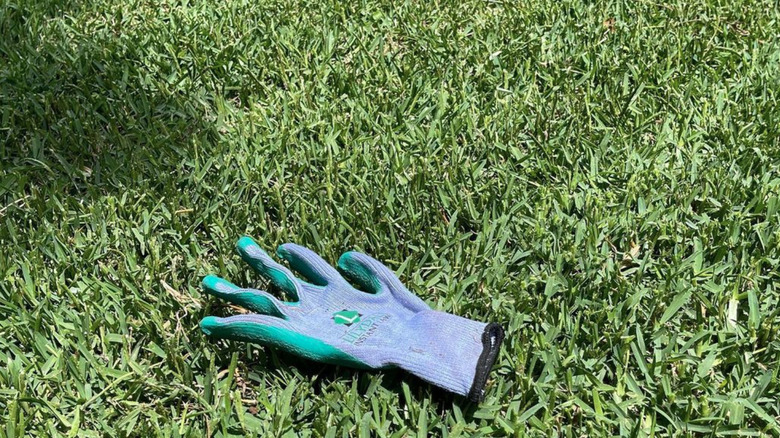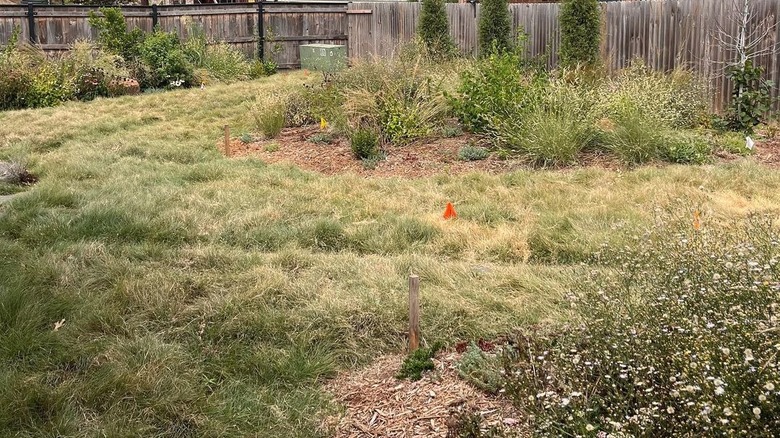How To Care For Your Buffalo Grass Lawn
Buffalo grass is a warm-season grass native to North America, and it's so-named because it is the primary food source of American bison, which once roamed the Great Plains in huge herds. Today, wild bison are "ecologically extinct," meaning they no longer roam in the wild, but herds are maintained by private owners and conservationists. Like the bison, buffalo grass has also gained some domestic significance. Buffalo grass is the only native species of grass that Americans frequently use for lawns and turf! One of the reasons why buffalo grass is so beloved is that it is relatively easy to grow and maintain compared to other lawn cover options; all it really needs is plenty of full sunlight, occasional watering and mowing, and attentive weed removal.
Buffalo grass is very hardy and self-sufficient, but that doesn't mean you should just seed it and forget it. This sweet species still needs some help to thrive and create a luxe, luscious lawn. Here's what you need to know about planting and maintaining buffalo grass to get better-looking grass and achieve the native, low-maintenance lawn of your dreams.
Starting a buffalo grass lawn
The best way to get good results is to have a good plan. Assess your property and the natural landscape to make sure you're working with nature and not against it. Buffalo grass grows on the open plains of North America, so it thrives in warm, dry, and sunny conditions. In fact, Buffalo grass needs at least 6 to 8 hours of direct sunlight every day in order to thrive. On the flip side, it won't do so well in shady patches under trees and awnings or wet, sandy, or marshy soils. Fertile loamy or clay soil is ideal for this species of grass, but it can adapt to a variety of conditions within that range.
Buffalo grass seeds are difficult to harvest and can therefore be more expensive than other turf varieties. Roots need time to establish before any frost, so plant seeds in spring to early summer or in early fall if you live in an area where winters are warm and mild. If you don't have naturally rich soil, apply a fertilizer with plenty of phosphorous and nitrogen to prompt speedy growth and water seedlings consistently one to two times per day. Given proper conditions, buffalo grass seeds will germinate within about two to three weeks.
Supporting your buffalo grass
Once established, maintaining buffalo grass is notoriously simple. It is built to survive out on the open plains, where it doesn't rain very often. Because it's very drought tolerant, it would be difficult to underwater your buffalo grass, but you should be cautious about overwatering, as this can encourage invaders like Johnson grass and Bermuda grass. Watering once per week with an inch of water should be sufficient to keep buffalo grass green and happy. The variety can be susceptible to weeds, so keep a close eye out for invasive plant species and pluck them out as soon as possible. If you must, only use chemical weed solutions that are specifically designed for buffalo grass.
When grown long, buffalo grass has a soft texture and feathery appearance that blows beautifully in the breeze, but it can also be mowed to create a neat, padded lawn. If you choose to mow your buffalo grass, mow no shorter than 2 inches tall and no more than once per week. One amazing advantage to buffalo grass lawns is that it grows in a curved shape, meaning even if the blades are 4 to 5 inches long, the lawn won't appear overgrown. When the grass is dormant in winter or early spring, rake up the thatch to make room for fresh growth.


